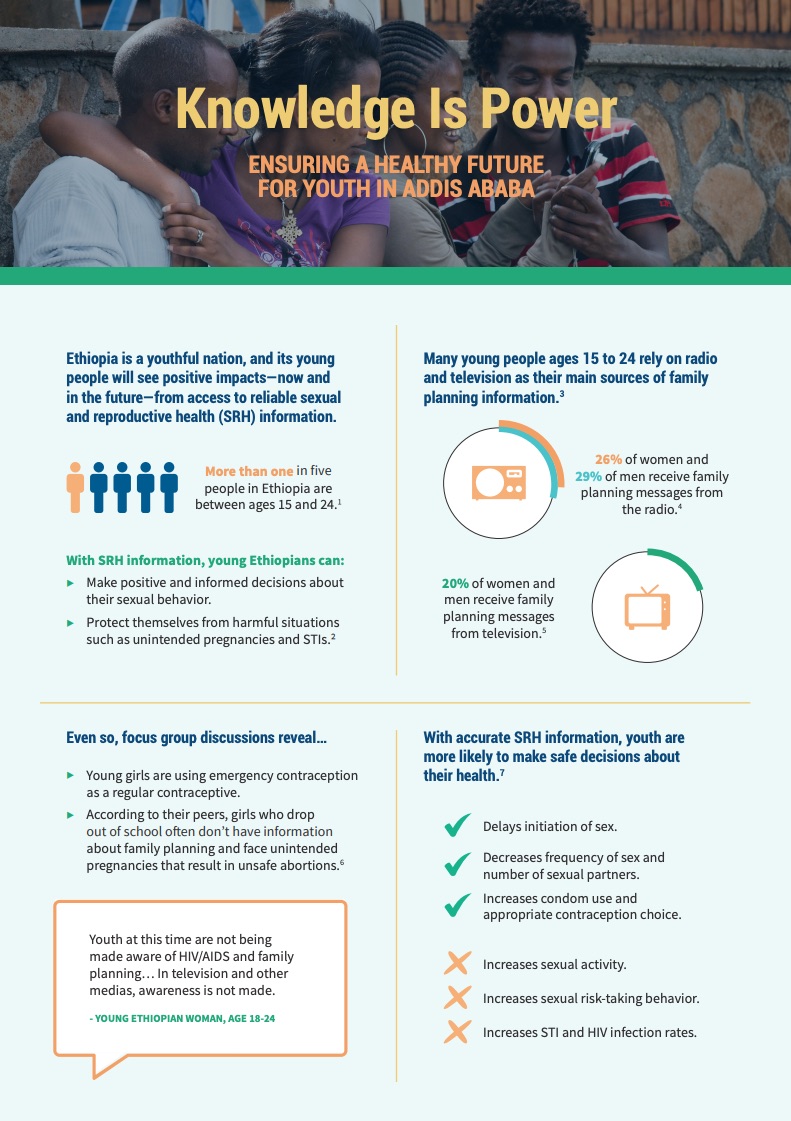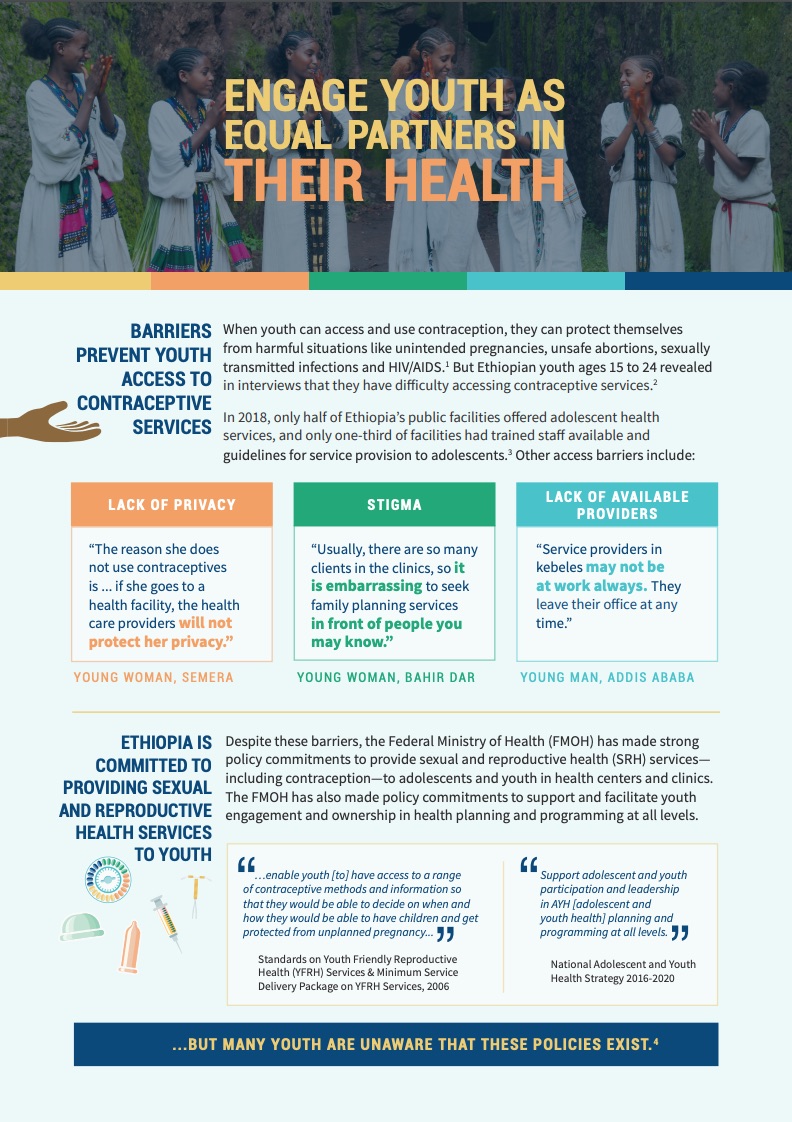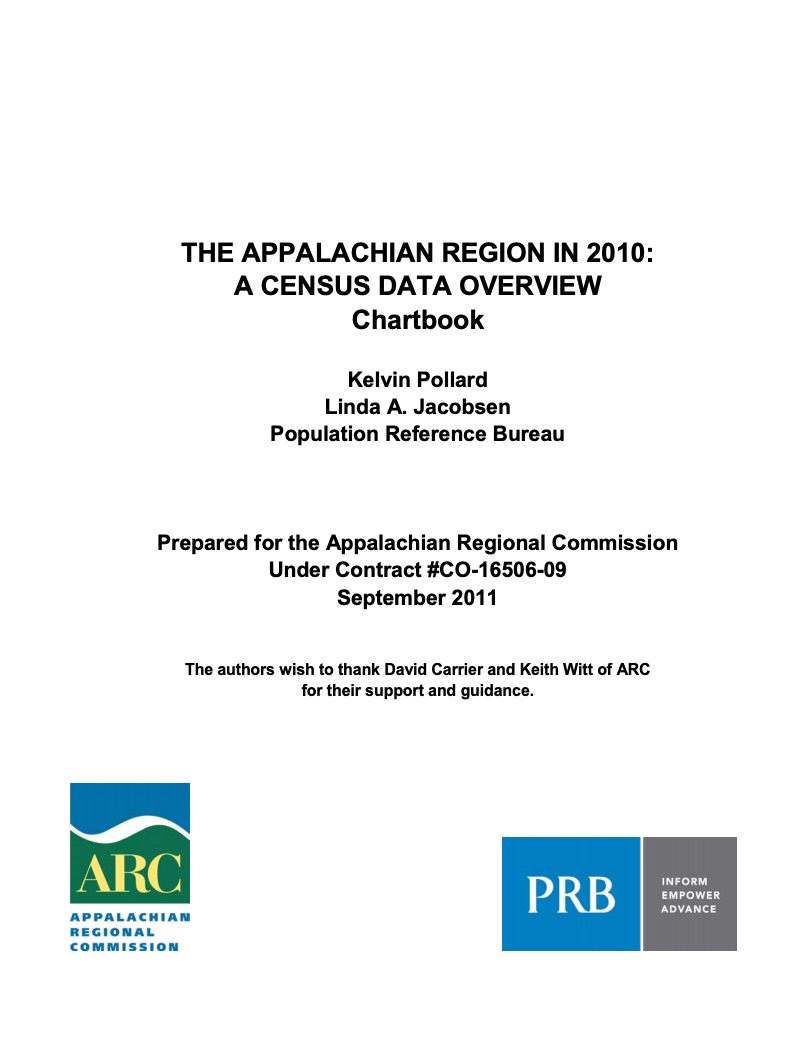175 Search Results Found For : "january-anma.shop"
Maternal Mortality in Guatemala: A Preventable Tragedy
(2003) From instituting new maternal health policies to addressing the quality of health services for pregnant women and their newborns, Guatemala is taking a number of steps to try to reduce deaths and disability related to pregnancy, delivery, and postpartum complications.

Project: Empowering Evidence-Driven Advocacy
Fact Sheet. Knowledge is Power–Ensuring a Healthy Future for Youth in Addis Ababa
In 2018, Population Reference Bureau (PRB) and the International Youth Alliance for Family Planning (IYAFP) conducted interviews and focus groups in three Ethiopian regions to assess implementation of youth-friendly contraceptive services.
Rural Children Lag in Early Childhood Educational Skills
(2005) A new study on early childhood educational achievement says that young rural children begin elementary school well behind their urban and suburban peers in reading and math skills.

Project: Empowering Evidence-Driven Advocacy
Fact Sheet. Engage Ethiopian Youth as Equal Partners in Their Health
In 2018, Population Reference Bureau (PRB) and the International Youth Alliance for Family Planning (IYAFP) conducted interviews and focus groups in three Ethiopian regions to assess implementation of youth-friendly contraceptive services.
Demographic Challenges of the Sahel
This article focuses on the demographics of the 10 countries that make up the Sahel region--Burkina Faso, Chad, Eritrea, The Gambia, Guinea-Bissau, Mali, Mauritania, Niger, Senegal, and Sudan.

Today’s Research on Aging: How COVID-19 Protections Affected Older Adults’ Mental Health
New research shows the pandemic deepened feelings of loneliness, anxiety, and depression among older adults and their caregivers. Social connection is the "medicine hiding in plain sight."

Project: Appalachia: Demographic and Socioeconomic Trends
The Appalachian Region in 2010: A Census Data Overview
Of the 308.7 million Americans in 2010, 25.2 million lived in the Appalachian region. Yet the population size of Appalachia's 420 counties varied greatly.
